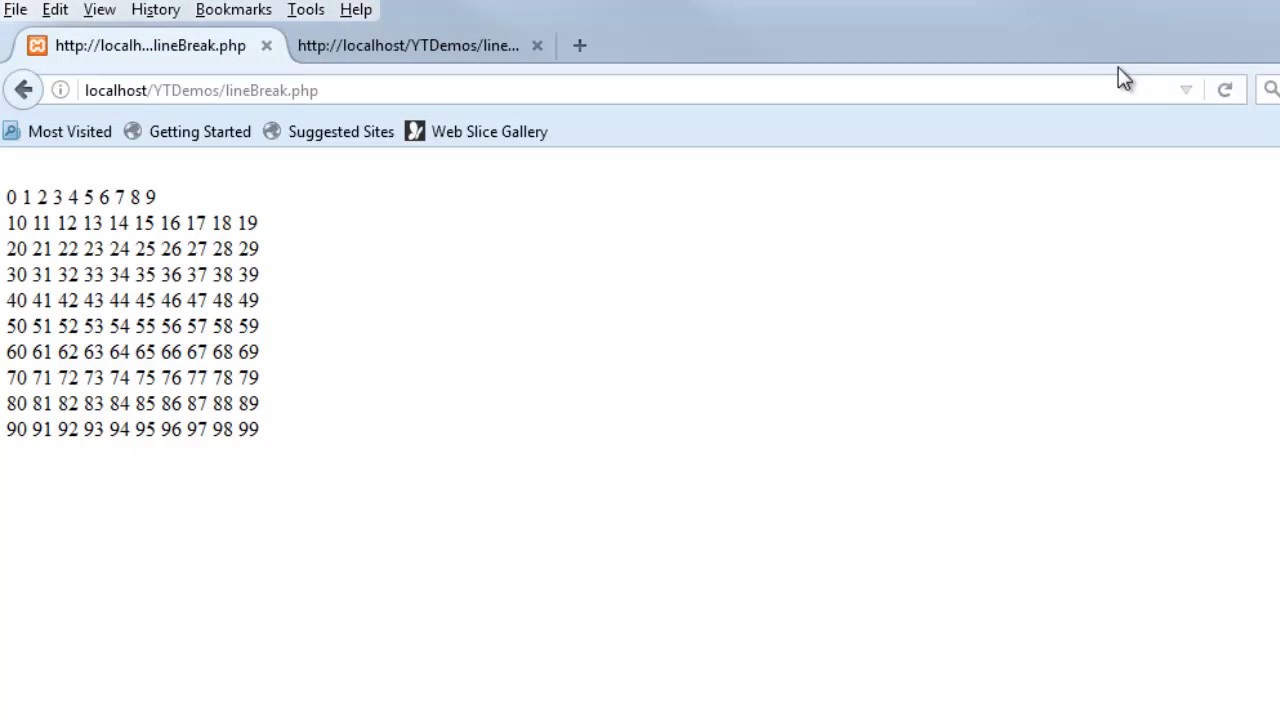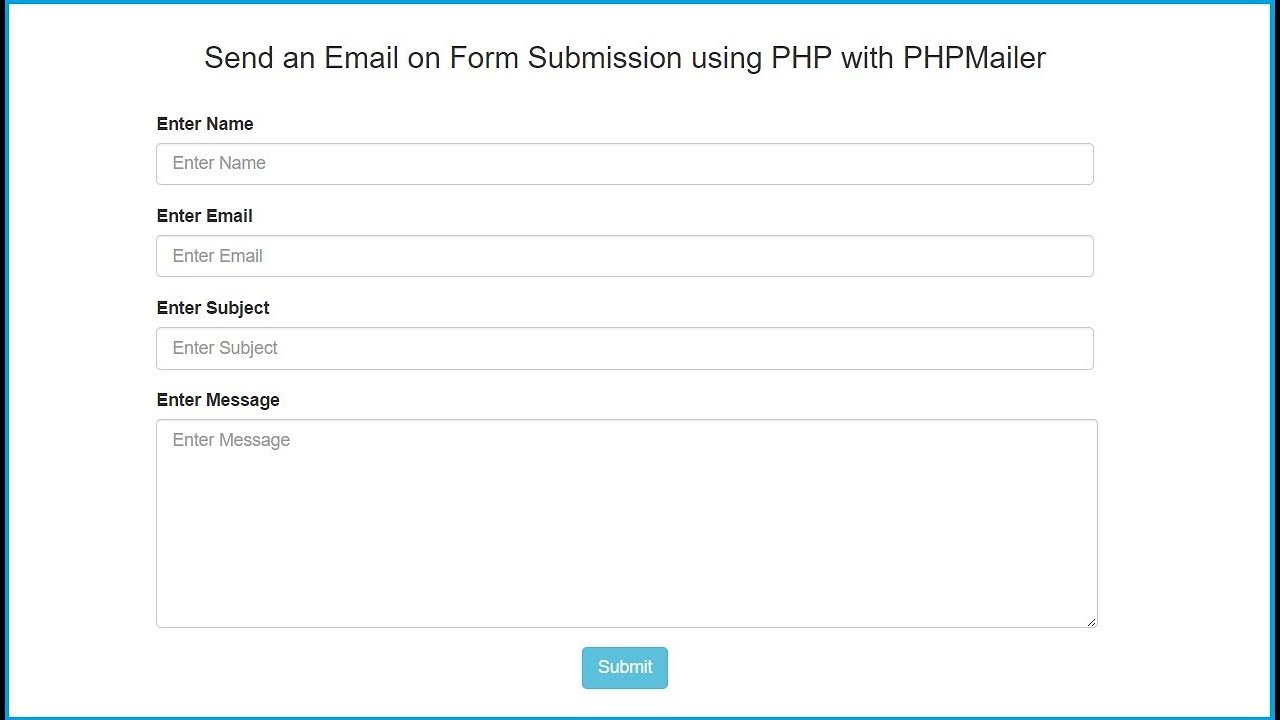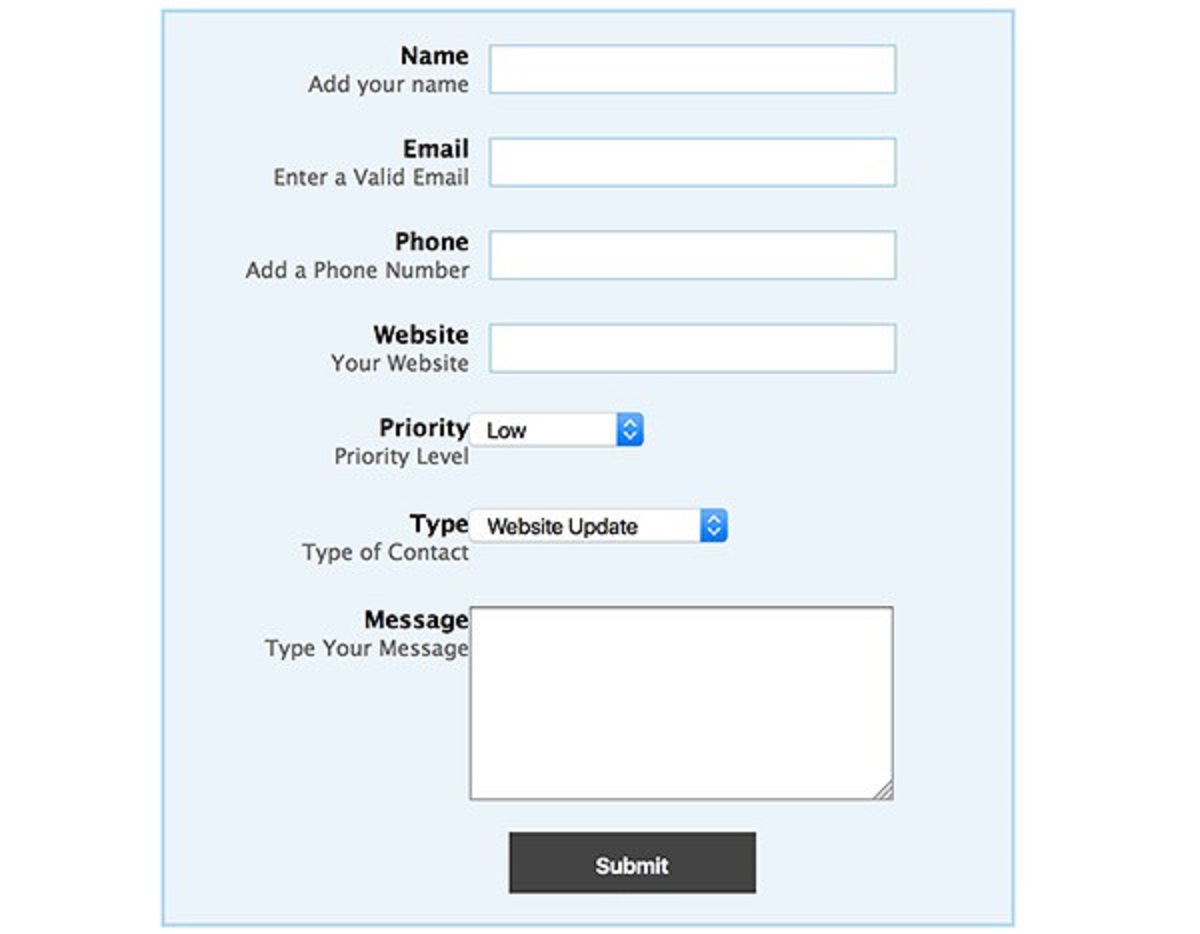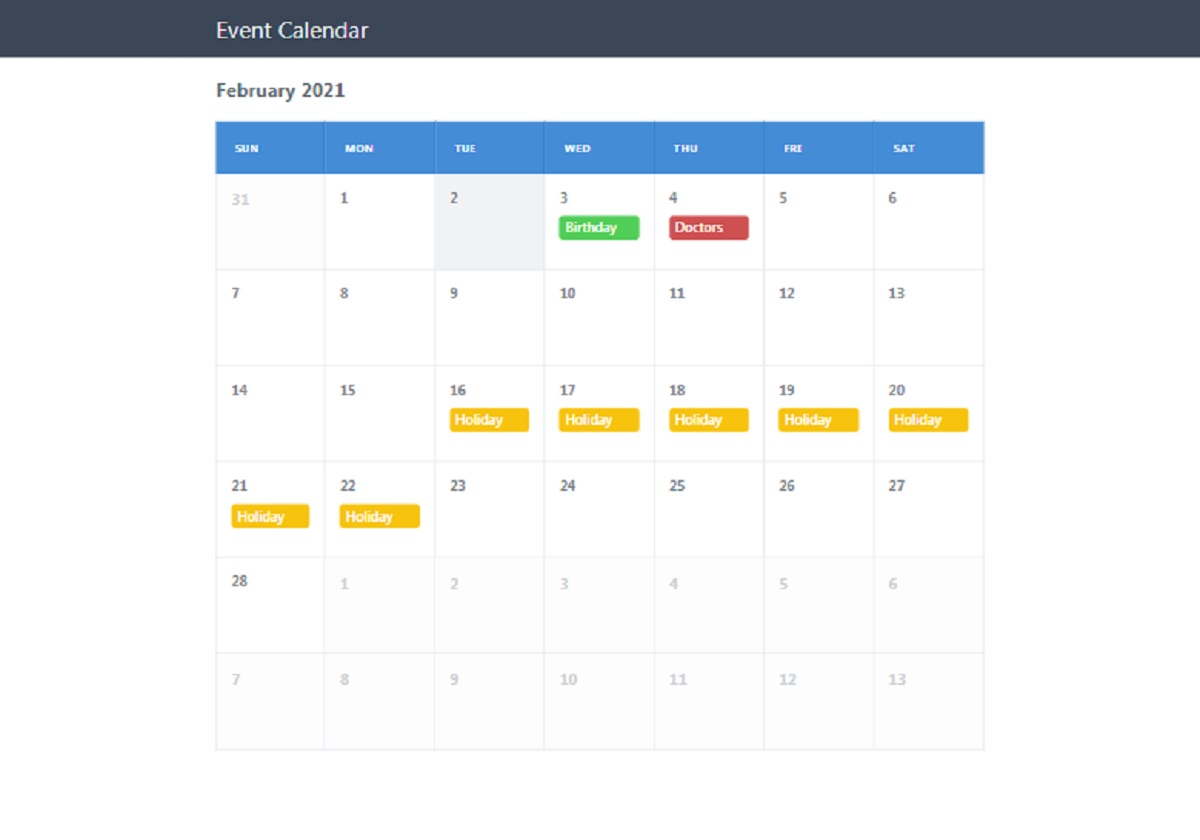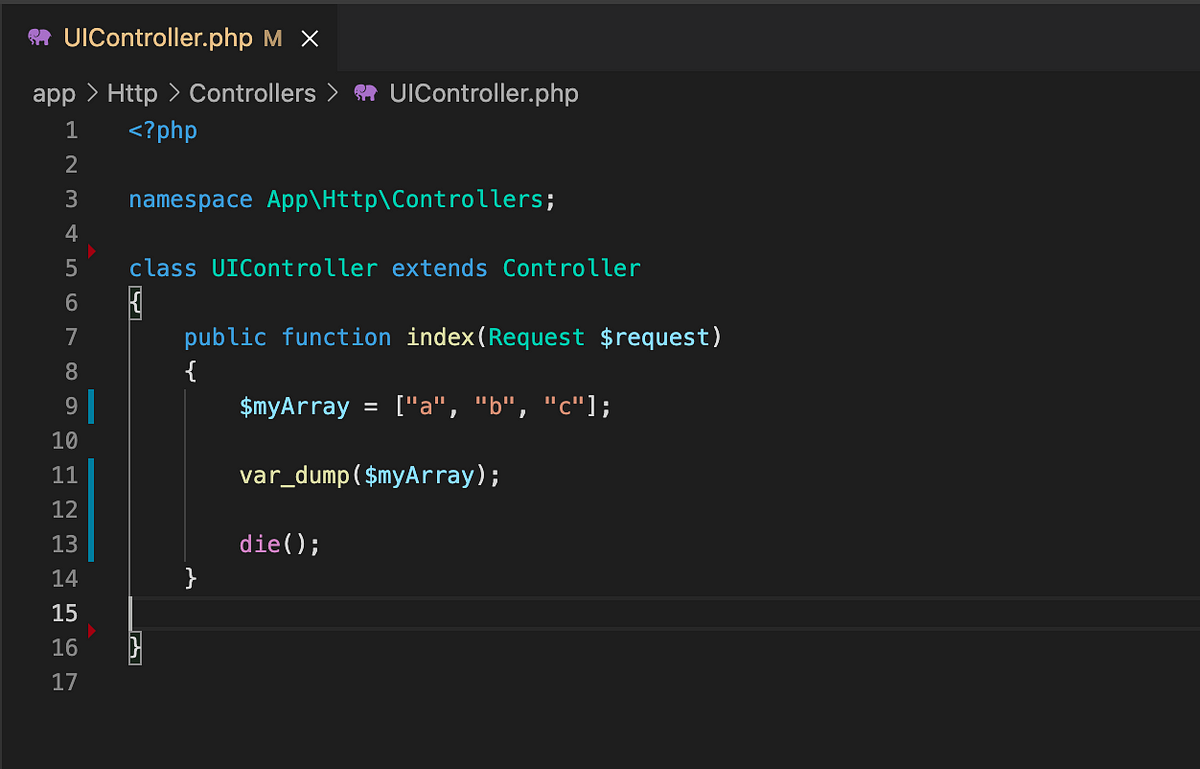Introduction
PHP, which stands for Hypertext Preprocessor, is a widely-used server-side scripting language that is specifically designed for web development. It was originally created by Rasmus Lerdorf in 1994 and has since evolved into a popular choice for building dynamic websites, web applications, and online systems. PHP is known for its simplicity, flexibility, and extensive support for various databases, making it a valuable tool for developers.
One of the key advantages of PHP is its compatibility with multiple platforms, including Windows, Linux, macOS, and various web servers. This allows developers to seamlessly integrate PHP code with existing systems and deploy applications across different environments. Additionally, PHP offers an extensive set of built-in functions and libraries, providing developers with a wide range of tools to streamline the development process.
The syntax of PHP is similar to that of C and Perl, making it relatively easy for programmers who are already familiar with these languages to adapt to PHP. It also supports object-oriented programming, allowing developers to write modular and reusable code for better code organization and maintenance.
Furthermore, PHP has a large and active community of developers who constantly contribute to its improvement and share their knowledge and resources. This vibrant community has resulted in a wealth of documentation, tutorials, forums, and open-source projects, making it easy for developers to find solutions to their coding challenges and learn from each other.
Whether you are a seasoned developer or just starting your journey in web development, PHP offers a solid foundation for building dynamic and interactive web applications. Its versatility and ease of use make it a popular choice among developers across the globe. In the following sections, we will explore the fundamental concepts and features of PHP, allowing you to gain a deeper understanding of this powerful scripting language.
The Basics
Before diving into the various aspects of PHP programming, it is important to familiarize yourself with the basic principles of the language. Understanding these fundamentals will lay a solid foundation for your journey into PHP development.
First and foremost, PHP code is executed on the server-side, which means that the server processes the code and generates HTML, CSS, or JavaScript to be sent back to the client’s web browser. This server-side processing enables PHP to perform dynamic tasks and interact with databases, making it invaluable for developing feature-rich web applications.
PHP code is typically embedded within HTML markup using special delimiters, known as “tags.” The most common way to delimit PHP code is by using the opening tag ““. Anything between these tags is treated as PHP code and will be executed by the server.
Variables are used in PHP to store and manipulate data. In PHP, variables begin with a dollar sign “$” followed by the variable name. PHP has a loose-typing system, which means that variables do not need to be explicitly declared with a specific data type. They can be assigned values of different types, such as integers, strings, arrays, or objects, and the data type is determined dynamically at runtime.
PHP also supports constants, which are similar to variables but hold values that cannot be changed once defined. Constants are typically used to store values that remain constant throughout the execution of a PHP script, such as configuration settings or mathematical constants.
PHP includes a wide range of operators for performing mathematical, comparison, and logical operations, including addition, subtraction, multiplication, division, and more. These operators can be used to manipulate variables and perform calculations within PHP code.
Furthermore, PHP provides control structures, such as conditional statements and loops, to control the flow of execution based on certain conditions or to repeat a set of instructions multiple times. Conditional statements, such as the if statement and the switch statement, allow you to execute different blocks of code based on specific conditions. Loops, such as the for loop and the while loop, enable you to repeat a block of code multiple times until a certain condition is met.
These are just some of the basic concepts and features of PHP that you need to grasp before delving deeper into PHP development. Familiarizing yourself with these fundamentals will pave the way for understanding more advanced concepts and building robust web applications using PHP.
Variables and Constants
Variables play a crucial role in PHP programming, allowing you to store and manipulate data. In PHP, variables are created by using the dollar sign “$” followed by the variable name. It’s important to note that PHP is a loosely typed language, which means that variables do not need to be explicitly declared with a specific data type.
You can assign values to variables using the assignment operator “=” and update the value later using the same operator. PHP supports various data types, including integers, floats, strings, booleans, arrays, and objects. The data type of a variable is determined dynamically based on the value it holds.
Constants, on the other hand, are similar to variables but with a crucial difference: their values cannot be changed once defined. Constants are typically used to store values that remain constant throughout the execution of a PHP script, such as configuration settings or mathematical constants.
In PHP, constants are defined using the “define()” function, which takes two arguments: the constant name and its value. Once defined, constants can be accessed throughout the PHP script by simply referring to their names. It’s common practice to define constants in uppercase letters to distinguish them from variables.
Using variables and constants effectively can greatly enhance the flexibility and maintainability of your PHP code. By storing data in variables, you can easily manipulate and update the data as needed. Variables also play a crucial role in working with user input, database operations, and generating dynamic content.
Constants, on the other hand, provide a way to store values that should not be modified, ensuring the integrity of critical data within your PHP scripts. They can be particularly useful for storing values that are used repeatedly throughout your codebase, such as database connection details or API keys.
When working with variables and constants, it’s important to consider naming conventions and best practices. Choose descriptive and meaningful names for your variables and constants to improve code readability. Avoid using reserved keywords as variable or constant names to prevent conflicts. Additionally, follow a consistent naming convention, such as camel case or snake case, for better code organization.
Understanding how to effectively work with variables and constants is essential for PHP developers. By leveraging these powerful features, you can create dynamic and robust applications that efficiently handle data and provide a personalized user experience.
Conditional Statements
Conditional statements are an essential part of any programming language, and PHP is no exception. They allow you to control the flow of your code based on specific conditions, making your PHP scripts more dynamic and responsive to different situations.
In PHP, the most common conditional statement is the “if” statement. The “if” statement evaluates a condition and executes a block of code if the condition is true. It has the following syntax:
if (condition) {
// code to be executed if the condition is true
}You can also add an “else” block to the “if” statement to specify a block of code to be executed if the condition is false:
if (condition) {
// code to be executed if the condition is true
} else {
// code to be executed if the condition is false
}Additionally, PHP provides the “elseif” statement, which allows you to specify multiple conditions to be evaluated consecutively. The “elseif” statement is useful when you have multiple conditions to check, and you want to execute different code blocks based on these conditions:
if (condition1) {
// code to be executed if condition1 is true
} elseif (condition2) {
// code to be executed if condition2 is true
} else {
// code to be executed if none of the conditions are true
}Another useful conditional statement in PHP is the “switch” statement. The “switch” statement is used when you have a single variable with multiple possible values and you want to perform different actions based on the value of that variable. The syntax of the “switch” statement is as follows:
switch (variable) {
case value1:
// code to be executed if the variable is equal to value1
break;
case value2:
// code to be executed if the variable is equal to value2
break;
default:
// code to be executed if none of the values match the variable
}Conditional statements are powerful tools for controlling the execution flow in your PHP scripts. They allow you to handle different scenarios and make your code more flexible and adaptable. Whether you need to validate user input, make decisions based on database values, or handle different responses in an application, conditional statements are essential for achieving the desired outcomes.
Loops
Loops are an essential part of PHP programming, allowing you to repeat a block of code multiple times. They provide a convenient and efficient way to perform repetitive tasks, iterate over arrays, and process large sets of data. PHP offers several types of loops to cater to different needs and scenarios.
The most common type of loop in PHP is the “for” loop. The “for” loop allows you to specify the number of times the loop should iterate by defining an initialization expression, a condition to be evaluated before each iteration, and an update expression to be executed after each iteration. The syntax of a “for” loop is as follows:
for (initialization; condition; update) {
// code to be executed in each iteration
}Another type of loop in PHP is the “while” loop. The “while” loop continues to execute a block of code as long as a specified condition is true. The condition is evaluated before each iteration. If the condition is false, the loop is terminated. The syntax of a “while” loop is as follows:
while (condition) {
// code to be executed in each iteration
}PHP also provides the “do-while” loop, which is similar to the “while” loop but with a critical difference: the condition is evaluated after each iteration. This means that the code block will be executed at least once before the condition is checked. The syntax of a “do-while” loop is as follows:
do {
// code to be executed in each iteration
} while (condition);In addition to these common loops, PHP also offers the “foreach” loop, which is specifically designed for iterating over arrays. The “foreach” loop iterates over each element in an array and assigns the value of the current element to a variable. This loop is particularly useful when working with arrays or collections of data. The syntax of a “foreach” loop is as follows:
foreach ($array as $value) {
// code to be executed in each iteration
}Loops provide the flexibility and power to handle repetitive tasks efficiently in PHP. Whether you need to iterate over an array, process a list of data, or perform calculations based on certain conditions, loops are an essential tool in your PHP programming arsenal.
Functions
Functions are an integral part of PHP programming, allowing you to encapsulate a block of code into a reusable unit. Functions provide modularity, improve code organization, and enhance code reusability, making your PHP scripts more efficient and maintainable.
In PHP, you can define a function using the “function” keyword, followed by the function name and a pair of parentheses. You can also specify parameters within the parentheses if your function needs to accept inputs. The syntax of defining a function in PHP is as follows:
function functionName(parameter1, parameter2, ...) {
// code to be executed
}Once a function is defined, you can call it by using its name followed by a pair of parentheses. If your function accepts parameters, you can pass values to those parameters within the parentheses. The function will then execute the code inside its body and return a value (if specified).
Functions can help in improving code readability and maintaining modular code structures. They allow you to break down complex tasks into smaller, more manageable parts. This makes your code more organized and easier to understand.
PHP also supports returning values from functions using the “return” keyword. When a function encounters the “return” statement, it immediately exits and returns the specified value to the place where it was called. This allows you to return data from a function for further processing or manipulation.
Additionally, PHP allows for the use of default parameter values in functions. This means that you can assign default values to parameters, which will be used if the caller does not provide explicit values for those parameters. This provides flexibility and allows you to make certain parameters optional.
Another feature of functions in PHP is the concept of variable scope. Variables defined inside a function have local scope, which means they can only be accessed within the function itself. This helps prevent naming conflicts and improves code isolation. However, if you need to access a variable defined outside the function, you can use the “global” keyword to import it into the function’s local scope.
By using functions effectively, you can improve code reusability, reduce code duplication, and simplify the maintenance of your PHP scripts. They allow you to organize your code into reusable blocks, making your code more modular and efficient. Functions are an essential tool for effective PHP development.
Arrays
Arrays are an essential data structure in PHP, allowing you to store and manipulate collections of related data. An array is a variable that can hold multiple values, such as numbers, strings, or even other arrays. With arrays, you can conveniently group data together and access elements using their index or key.
In PHP, there are two types of arrays: indexed arrays and associative arrays. An indexed array is a collection of values that are assigned numeric indices, starting from 0. You can access elements in an indexed array using their numeric indices. The following is an example of an indexed array:
$fruits = array("Apple", "Banana", "Orange");An associative array, on the other hand, is a collection of key-value pairs, where each element is assigned a unique key. The key can be a string or a number, and it is used to access the corresponding value. Here’s an example of an associative array:
$person = array("name" => "John", "age" => 25, "city" => "New York");Arrays in PHP are dynamic, which means you can add, modify, or remove elements as needed. You can use various array functions to manipulate arrays, such as adding elements with the “array_push()” function or removing elements with the “array_pop()” function.
PHP also provides powerful array functions for sorting and filtering arrays. You can sort arrays in ascending or descending order using functions like “sort()”, “rsort()”, “asort()”, and “arsort()”. You can filter arrays based on certain conditions using functions like “array_filter()”, “array_map()”, and “array_reduce()”. These functions allow you to process arrays efficiently and extract the desired data.
Furthermore, PHP offers multidimensional arrays, which are arrays within arrays. This allows you to create complex data structures with nested levels of arrays. Multidimensional arrays are useful for representing hierarchical data or when you need to store related information in a structured format.
Arrays are incredibly versatile and can be used in various scenarios. They are particularly useful when working with large sets of data, managing form submissions, or storing configuration settings. By leveraging arrays effectively, you can manipulate and process data with ease and create more robust PHP applications.
Object-Oriented Programming
Object-Oriented Programming (OOP) is a paradigm that allows you to structure your PHP code around objects, which are instances of classes. OOP promotes the concepts of encapsulation, inheritance, and polymorphism, enabling you to create modular, reusable, and maintainable code.
In PHP, a class is a blueprint for creating objects. It defines the properties (attributes) and behaviors (methods) that an object of that class can have. Using the “class” keyword, you can define a class with its properties and methods. Here’s an example:
class Car {
public $brand;
public $color;
public function startEngine() {
// code to start the engine
}
}Once a class is defined, you can create objects (also known as instances) of that class using the “new” keyword. Objects are created based on the structure defined by the class and can access its properties and methods. Here’s an example:
$myCar = new Car();
$myCar->brand = "Toyota";
$myCar->color = "Blue";
$myCar->startEngine();OOP brings several benefits to PHP development. One of the key advantages is code reuse. With OOP, you can create classes that can be used as templates for creating multiple objects with similar properties and behaviors. This reduces code duplication and improves code organization and maintenance.
Inheritance is another important aspect of OOP. It allows you to create new classes that inherit properties and behaviors from existing classes. The derived class (also known as a child class or subclass) can extend or override the properties and methods of the base class (also known as a parent class or superclass). This promotes code reuse and allows for better code organization.
Polymorphism is a feature of OOP that allows objects of different classes to be treated as objects of a common superclass. This enables you to write code that can work with different objects interchangeably based on a shared interface or inheritance hierarchy. Polymorphism promotes flexibility and code extensibility.
By adopting OOP principles, you can create modular and scalable PHP applications. OOP provides a structured and organized way to design and develop code. It promotes code reusability, maintainability, and flexibility. With OOP, you can build complex systems while keeping the codebase clean and manageable.
File Handling
File handling is an essential aspect of PHP programming, allowing you to interact with files on the server’s filesystem. PHP provides a wide range of functions and methods to create, read, write, and manipulate files, making it a versatile language for file-related operations.
One of the basic operations in file handling is reading data from files. PHP offers functions like “fopen()” and “file_get_contents()” to open files and retrieve their contents. You can read files line by line using functions like “fgets()”, or read the entire file at once using functions like “file_get_contents()”.
Writing data to files is another common operation. PHP provides functions like “fopen()”, “fwrite()”, and “file_put_contents()” to open files for writing and save data to them. You can append data to an existing file using the “a” file mode option or overwrite the entire file using the “w” file mode option.
PHP also allows you to manipulate files, such as renaming and deleting them. Functions like “rename()” and “unlink()” enable you to rename or delete files respectively. Additionally, you can check if a file exists using the “file_exists()” function, and check file permissions using the “fileperms()” function.
When working with files, it’s essential to handle errors and exceptions effectively. PHP provides functions like “file_exists()”, “is_readable()”, and “is_writable()” to check the existence and accessibility of files before performing operations on them. You can also use error handling mechanisms like try-catch blocks to catch and handle any errors that may occur during file operations.
In addition to working with individual files, PHP offers functions to handle directories as well. Functions like “mkdir()” and “rmdir()” allow you to create and remove directories respectively. You can also scan directories and retrieve their contents using functions like “scandir()” and “glob()”.
File handling in PHP extends beyond simple read and write operations. PHP supports more advanced file operations like copying files, moving files, and handling file uploads. These functionalities allow you to work with files in a variety of scenarios, such as managing file uploads in web applications or handling file operations in a server-side script.
By leveraging the file handling capabilities of PHP, you can create powerful applications that interact with files and manage data effectively. Whether you need to read or write data to files, manipulate file directories, or handle file uploads, PHP provides a wide range of features and functions to meet your file handling needs.
Database Connections
Database connections are a fundamental aspect of web development, allowing you to interact with databases and store/retrieve data. In PHP, there are several methods to establish connections with databases, including MySQL, PostgreSQL, SQLite, and more. PHP provides a rich set of functions and extensions to facilitate database connectivity and querying.
To establish a connection with a database, you need to provide connection details such as the database host, username, password, and database name. PHP offers functions such as “mysqli_connect()” and “PDO::__construct()” to establish connections using various database drivers.
Once connected, you can execute SQL queries to retrieve, insert, update, or delete data from the database. PHP provides numerous functions and methods to perform database queries, including “mysqli_query()”, “PDO::query()”, “mysqli_fetch_array()”, “PDOStatement::fetch()”, and more. These functions allow you to work with result sets and retrieve the desired data from the database.
In addition to executing queries, PHP also offers methods to handle prepared statements, which enhance security and performance. Prepared statements allow you to create SQL templates with placeholders for variables. By binding values to these placeholders, you can prevent SQL injection attacks and optimize query execution.
Database connections in PHP also include functions to handle transactions. Transactions help ensure data integrity by grouping a series of related database operations and committing or rolling back those operations as a single unit. Functions like “mysqli_autocommit()”, “mysqli_commit()”, and “mysqli_rollback()” facilitate transaction management in PHP.
Furthermore, PHP provides features to handle database errors and exceptions. By using functions like “mysqli_errno()”, “mysqli_error()”, “PDOException::getCode()”, and “PDOException::getMessage()”, you can capture and handle errors that may occur during database operations, improving the robustness of your applications.
Working with databases in PHP extends beyond simple querying. PHP also offers extensions and functionalities to work with specific databases, such as accessing NoSQL databases, working with data models like Object-Relational Mapping (ORM), and implementing caching mechanisms for database results.
With PHP’s extensive database connectivity functions and extensions, you can create dynamic and data-driven web applications. By establishing connections, executing queries, handling transactions, and managing errors effectively, you can harness the power of databases to store, retrieve, and manipulate data in your PHP applications.
Error Handling
Error handling is an essential aspect of PHP programming that ensures the robustness and stability of your applications. It involves identifying, capturing, and properly managing errors and exceptions that may occur during the execution of your PHP code.
In PHP, errors can occur due to various reasons, such as syntax errors, runtime errors, or logical errors. When an error occurs, PHP generates an error message or throws an exception to indicate the nature of the error and provide information for debugging and troubleshooting.
PHP provides different levels of error reporting, ranging from simple warnings and notices to fatal errors that halt script execution. The error reporting level can be adjusted using the “error_reporting” directive in the PHP configuration or by using the “error_reporting” function in your PHP code.
To handle errors and exceptions gracefully, PHP offers error handling mechanisms like try-catch blocks. By enclosing a block of code in a “try” block, you can catch any thrown exceptions and handle them in a “catch” block. This allows you to capture and manage errors in a controlled manner, providing fallback actions or alternative paths in case of errors.
In addition to try-catch blocks, PHP also provides the “finally” block, which allows you to specify cleanup code that will always be executed regardless of whether an exception is thrown or not. This is particularly useful for ensuring that necessary cleanup operations, such as closing database connections or freeing resources, are always performed.
When dealing with errors and exceptions, it is important to provide meaningful error messages and log them appropriately for debugging purposes. PHP offers functions like “error_log()” and extensions like Monolog for logging errors to various destinations, such as the console, files, or external services.
Furthermore, PHP allows you to define custom error handlers and exception handlers to tailor error handling behavior to your specific needs. You can override the default error handling behavior and implement your own error handling routines to provide a more personalized experience for your users.
Effective error handling in PHP also involves implementing defensive coding practices, such as validating user input, checking return values, and handling potential exceptions or error conditions that could arise during the execution of your code.
By properly handling errors and exceptions in your PHP code, you can improve the stability and reliability of your applications. Effective error handling practices help identify bugs or issues, enhance the user experience, and make your code more robust and resilient against unexpected situations.
Regular Expressions
Regular expressions, also known as regex, are powerful tools for pattern matching and string manipulation in PHP. A regular expression is a sequence of characters that defines a search pattern. It allows you to search, match, and manipulate text based on specific patterns or criteria.
In PHP, regular expressions are handled using functions and methods provided by the PCRE (Perl Compatible Regular Expressions) extension. PHP offers various functions, such as “preg_match()”, “preg_replace()”, and “preg_split()”, to work with regular expressions.
A typical use case for regular expressions in PHP is validating user input. For example, you can use a regular expression to ensure that an email address or a phone number entered by a user matches a specific pattern. Regular expressions provide a flexible and efficient way to perform such validations.
Regular expressions consist of a combination of normal characters and special characters, which have special meaning within the expression. Special characters, also called metacharacters, allow you to define the pattern to search for, such as specifying the number of occurrences or matching specific types of characters.
For example, the metacharacter “+” means “one or more occurrences” and the metacharacter “*” means “zero or more occurrences”. So, the regular expression “/\w+/” would match one or more word characters.
Regular expressions also support character classes, which allow you to match a specific set of characters. For example, the character class “[0-9]” matches any digit between 0 and 9. You can also use predefined character classes, such as “\d” for digits, “\w” for word characters, and “\s” for whitespace characters.
Quantifiers, such as “?” for “zero or one occurrence” and “{n,m}” for “between n and m occurrences”, let you specify the number of occurrences to match. Anchors, such as “^” for the start of a line and “$” for the end of a line, allow you to match patterns at specific positions within a string.
In addition to basic pattern matching, regular expressions in PHP also support capturing groups, which allow you to extract specific parts of a matched pattern. You can use parentheses to group parts of your regular expression and extract information from the matched string using backreferences.
Regular expressions can be complex, and mastering them requires practice and understanding of the syntax. Online resources and tools, such as regex testers, can be helpful for testing and fine-tuning your regular expressions.
With regular expressions in PHP, you can perform advanced string operations, such as searching, matching, replacing, and splitting strings based on specific patterns. Regular expressions are a powerful tool in a PHP developer’s toolkit, enabling you to manipulate and process text efficiently and precisely.
Mathematical Functions
PHP provides a wide range of mathematical functions that allow you to perform various mathematical operations in your PHP code. These functions cover a broad spectrum of mathematical operations, including basic arithmetic, rounding, exponentiation, trigonometry, logarithms, random number generation, and more.
One of the most commonly used mathematical functions in PHP is “sqrt()”, which computes the square root of a number. This function can be used to calculate distances, areas, or any other values that involve square roots.
PHP also provides functions for basic arithmetic operations, such as addition, subtraction, multiplication, and division. These functions include “abs()” for absolute value, “round()” for rounding numbers, “ceil()” for rounding up to the nearest integer, and “floor()” for rounding down to the nearest integer.
Trigonometric functions, such as “sin()”, “cos()”, and “tan()”, are also available in PHP. These functions allow you to calculate trigonometric ratios based on angles, which can be useful in various applications, such as geometry, physics, and computer graphics.
In addition to the basic mathematical functions, PHP offers functions for calculating logarithms, exponential values, absolute values, and logarithmic functions. These functions include “log()”, “exp()”, “pow()”, and “log10()”. They can be used in a wide range of scenarios, such as financial calculations, exponential growth modeling, and logarithmic scaling.
PHP also offers functions for generating random numbers, such as “rand()” and “mt_rand()”. These functions allow you to generate random integer values within a specific range. Random number generation is useful in applications like random data generation, game development, and statistical simulations.
Furthermore, PHP supports advanced mathematical functions like factorial calculations, statistical functions, numeric conversions, and date and time calculations. These functions, such as “fmod()”, “gcd()”, “bindec()”, and “strtotime()”, enhance the capabilities of PHP and enable you to perform specialized mathematical operations.
By utilizing PHP’s mathematical functions, you can perform various complex calculations and manipulations within your PHP applications. Whether you need to manipulate numbers, calculate angles, generate random values, or perform mathematical modeling, PHP’s mathematical functions provide the necessary tools for accurate and efficient calculations.
String Manipulation
String manipulation is a common task in PHP, and the language provides a rich set of built-in functions to perform various operations on strings. These functions enable you to manipulate, concatenate, format, search, and modify strings to suit your specific needs.
One of the most fundamental string functions in PHP is “strlen()”, which returns the length of a string. This function is frequently used to determine the number of characters in a string and perform validations based on length constraints.
PHP also provides functions for concatenating strings, such as the concatenation operator (.) and the “concat()” function. These allow you to combine multiple strings into a single string. Additionally, PHP offers shorthand assignment operators like (.=) for concatenating strings and assigning the result back to a variable.
Another important aspect of string manipulation is extracting substrings. PHP provides functions like “substr()” and “mb_substr()” to extract specific portions of a string based on a starting position and a desired length. These functions allow you to manipulate and extract relevant information from strings.
Searching and replacing specific segments within a string is another common string manipulation task. PHP offers functions like “strpos()”, “str_replace()”, and “preg_replace()” that allow you to search for a specific substring and replace it with a different value.
PHP also provides functions for transforming the case of strings, such as “strtolower()”, “strtoupper()”, and “ucwords()”. These functions allow you to convert strings to lowercase, uppercase, or title case, respectively, facilitating consistent formatting and presentation of text.
Formatting strings is another crucial aspect of string manipulation. PHP offers functions like “sprintf()” and “number_format()” for formatting strings and numbers, respectively. These functions enable you to control the appearance of data, such as decimal places, padding, and leading zeros.
String manipulation in PHP also involves handling special characters and encoding. Functions like “htmlspecialchars()” and “urlencode()” help sanitize and encode strings to ensure data integrity and security, especially when dealing with data that will be displayed in web pages or used in URLs.
Furthermore, PHP provides functions for trimming leading and trailing whitespace from strings using “trim()”, “ltrim()”, and “rtrim()”, as well as functions for splitting strings into an array based on a specified delimiter using “explode()” and “implode()”.
String manipulation is a fundamental skill in PHP programming, and PHP’s extensive set of string functions provides the necessary tools to manipulate, format, search, and transform strings. By leveraging these functions effectively, you can perform complex operations on strings and efficiently process text-based data.
Date and Time Functions
Working with dates and times is a common requirement in PHP programming, and PHP provides a robust set of built-in functions to handle various aspects of date and time manipulation. These functions allow you to work with dates, timezones, calculate intervals, format dates, and perform other date and time-related operations.
PHP offers functions like “date()”, “time()”, and “strtotime()” to work with dates and times. The “date()” function allows you to format a timestamp or the current date and time into a specific format, while the “time()” function returns the current Unix timestamp. The “strtotime()” function converts a textual representation of a date and time into a Unix timestamp.
PHP’s date functions provide a wide range of formatting options, enabling you to customize the output of dates and times. You can format dates and times based on various patterns and combinations of placeholders, such as “Y” for the four-digit year, “m” for the numeric month, “d” for the day of the month, “H” for the hour in 24-hour format, “i” for the minutes, and “s” for the seconds.
PHP also supports timezones, allowing you to work with dates and times in different geographical regions. Functions like “date_default_timezone_set()” and “date_timezone_set()” enable you to set the default timezone for PHP or specify a specific timezone for date and time operations. PHP also provides the “DateTime” class, which offers additional functionalities for date and time manipulation, including timezone conversion and interval calculations.
PHP’s date and time functions go beyond simply displaying and formatting dates. They allow you to perform various calculations and operations, such as adding or subtracting intervals from dates. Functions like “strtotime()” and “date_add()” enable you to perform arithmetic operations on dates, making it easier to calculate future or past dates based on specific requirements.
In addition, PHP provides functions to compare dates and times. With functions like “strtotime()” and “date_diff()”, you can compare two dates and determine the difference between them in terms of days, months, years, or even more granular units like hours, minutes, or seconds.
Furthermore, PHP offers functions to work with recurring events and schedules. Functions like “date_create()” and “date_interval_create_from_date_string()” allow you to create and manipulate recurring events like daily, weekly, or monthly schedules. This is particularly useful when dealing with tasks or events that need to repeat at regular intervals.
By utilizing PHP’s date and time functions, you can handle a wide range of date and time-related tasks, such as timestamp manipulation, date formatting, timezone conversions, and interval calculations. These functions provide the necessary tools to work with dates and times effectively and accurately in your PHP applications.
Cookies and Sessions
Cookies and sessions are essential components of web development that allow you to maintain state and track user interactions. PHP provides features and functions to effectively manage cookies and sessions, enabling you to create personalized and interactive web applications.
Cookies are small pieces of data that are stored on the user’s browser. They can be used to remember user preferences, track user activity, and provide personalized experiences. PHP offers functions like “setcookie()” to set cookies with specific names, values, expiration dates, and other attributes. The “$_COOKIE” superglobal variable allows you to access and process cookies sent by the user’s browser.
Sessions, on the other hand, are server-side mechanisms for preserving user data across multiple requests. A session is initiated when a user visits a website and ends when the user closes the browser or the session expires. PHP provides functions like “session_start()” to start a session, “$_SESSION” superglobal variable to store and access session data, and “session_destroy()” to terminate a session.
Cookies and sessions can be used together to enhance the user experience. For example, a session can be used to store user login information, while a cookie can remember the user’s preferences or language selection. This combination allows for personalization and smoother interactions during subsequent visits.
Using cookies and sessions effectively requires careful consideration of security and privacy concerns. It is important to ensure that sensitive data is not stored in cookies, and that session data is properly protected against tampering. PHP provides functions and settings to manage session security, such as “session_regenerate_id()” to change session IDs and “session_set_cookie_params()” to set secure cookie parameters.
Additionally, PHP supports session management options like using session handlers to store session data in databases or other external storage solutions, or using custom session.save_handler functions for more specialized requirements. These options allow for flexibility and customization in managing sessions based on specific application needs.
Furthermore, PHP provides functions to detect and handle session expiration, such as “session_status()” to check the status of a session, and “session_set_save_handler()” to define custom logic for handling session expiration and garbage collection.
By using cookies and sessions effectively in PHP, you can create dynamic and interactive web applications that maintain user state and provide personalized experiences. Understanding the functions and features available in PHP for cookie and session management allows you to tailor your applications to meet specific user needs and optimize user engagement.
Forms Handling
Handling forms is a crucial aspect of web development, as forms allow users to submit data to your PHP applications. PHP provides functions and features to effectively handle form submission, validate user input, process the submitted data, and provide appropriate feedback to the user.
When a form is submitted, the data is sent to the server using either the “GET” or “POST” method. PHP provides the superglobal variables “$_GET” and “$_POST” to access the submitted data. The choice of using either method depends on the sensitivity and size of the data being submitted.
PHP supports various form validation techniques to ensure that the data submitted by the user meets the required criteria. You can use PHP’s built-in functions, such as “filter_var()” and “preg_match()”, to validate input fields against predefined rules, such as email address validation or numeric validation.
Form validation also involves ensuring that required fields are not empty and handling errors appropriately. PHP provides functions to perform server-side validation and generate error messages, allowing you to notify the user about any validation failures or missing fields. Capturing and displaying validation errors helps users provide correct and accurate information.
PHP also offers features to sanitize user input and protect against security vulnerabilities, such as cross-site scripting (XSS) and SQL injection attacks. Functions like “htmlspecialchars()” and “mysqli_real_escape_string()” help sanitize input to prevent malicious code injection and ensure data integrity.
After validating and sanitizing the submitted form data, PHP allows you to process the data based on your application logic. You can use the submitted data to perform database operations, update records, send emails, generate reports, or trigger other actions based on specific requirements. PHP’s database connectivity functions and email handling functions come in handy for these scenarios.
Forms handling in PHP also involves displaying feedback messages to the user, such as success messages or error messages. You can use conditional statements and PHP’s string manipulation functions to dynamically generate feedback messages based on the outcome of the form submission process.
Furthermore, PHP provides mechanisms to handle file uploads through forms. By configuring the form’s enctype attribute and using functions like “move_uploaded_file()”, you can handle file uploads and process the uploaded files in your PHP application.
Handling forms effectively in PHP involves understanding the various functions and techniques available for form validation, data sanitization, processing, and feedback generation. Proper form handling enhances the user experience, ensures data accuracy and security, and allows you to build robust and interactive web applications.
Security Measures
Implementing security measures is crucial in PHP development to protect your applications from potential vulnerabilities and attacks. By incorporating security practices and utilizing PHP’s security features, you can safeguard sensitive data, prevent unauthorized access, and ensure the integrity of your applications.
One of the fundamental security measures in PHP is input validation and sanitization. Properly validating and sanitizing user input helps to prevent common vulnerabilities such as cross-site scripting (XSS) and SQL injection attacks. PHP provides functions like “htmlspecialchars()” and “mysqli_real_escape_string()” to sanitize user input and mitigate potential risks.
PHP also offers features for implementing password security. Passwords should be properly hashed and stored securely in your database to prevent unauthorized access. PHP provides functions like “password_hash()” and “password_verify()” to handle password hashing, and it is recommended to use encryption algorithms like bcrypt or Argon2 for secure password storage.
Secure session handling is another vital aspect of PHP security. Sessions should be properly managed to prevent session hijacking and ensure user authentication. PHP provides functions such as “session_regenerate_id()” and “session_set_cookie_params()” to enhance session security, and it’s crucial to enforce the use of secure connections (HTTPS) to protect sensitive session data.
Protecting against common attacks like cross-site scripting (XSS) and cross-site request forgery (CSRF) is essential. By properly validating input, sanitizing output, and implementing measures like token-based CSRF protection, you can minimize the risk of these attacks. PHP frameworks often include built-in security measures for handling these vulnerabilities.
Proper error handling is crucial for security as well. Displaying detailed error messages to users might reveal sensitive information about your application or infrastructure. It is recommended to log errors in a secure manner and provide generic error messages to users to avoid potential security breaches.
Secure file handling is also essential. PHP provides functions like “move_uploaded_file()” and “basename()” to handle file uploads securely, and it is important to validate file types and file sizes to prevent malicious file uploads that may exploit vulnerabilities in your application.
Regularly updating your PHP version and its associated libraries and frameworks is crucial for security. Staying up to date with security patches and following best practices helps to mitigate potential vulnerabilities and ensures that your application benefits from the latest security enhancements.
Lastly, practicing secure coding techniques and following security guidelines is paramount. This includes practices such as not storing sensitive information in cookies, properly encrypting sensitive data, and utilizing secure communication protocols like HTTPS.
By implementing these security measures in your PHP applications, you can minimize potential risks and vulnerabilities, protect user data, and ensure the overall integrity and security of your applications and systems.
Final Thoughts
PHP is a versatile and powerful scripting language that provides a wide range of features and functions to develop dynamic and interactive web applications. Understanding key aspects of PHP, such as HTML output, SEO writing techniques, and utilizing markdown formatting, allows you to efficiently create content for websites and improve their search engine visibility.
Whether you’re working with the basics of PHP, such as variables and conditional statements, or diving into more advanced topics like object-oriented programming and database connections, PHP provides the necessary tools and functions to create robust and scalable applications.
Remember to pay attention to security measures, such as input validation, password hashing, and session handling, to safeguard your applications from potential vulnerabilities and attacks. Regularly updating your PHP version and following secure coding practices also play a vital role in maintaining a secure development environment.
Additionally, string manipulation functions, regular expressions, and mathematical functions enable you to manipulate and process data effectively, ensuring accurate results and providing users with a seamless experience.
When handling forms and working with cookies and sessions, validating user input, sanitizing data, and ensuring data integrity are critical. Effectively managing form submissions, handling cookies and sessions, and providing appropriate feedback to users enhances the user experience and improves the overall functionality of your applications.
As you continue to explore and expand your knowledge of PHP, keep in mind the importance of adhering to best practices and industry standards. Regularly engage in continuous learning to stay up to date with the latest advancements and security measures in PHP development.
By leveraging the features of PHP and applying effective SEO writing techniques, HTML output validation, and proper markdown formatting, you can create high-quality content and develop powerful applications that meet the needs of your users and stand out in the competitive web development landscape.







